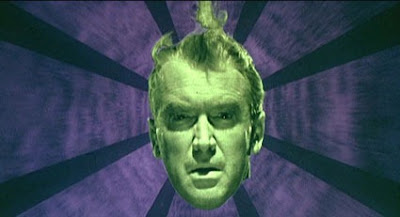Click on the full-screen button (at the bottom right
of the video), to make the video nice and BIG!
of the video), to make the video nice and BIG!
There’s no real room for the character to move, so the audience can focus on the expressions and emotions of the characters. The way characters act and react is always very important to understanding the story.

A common mistake of less experienced storyboard artists is framing their shots too tightly. Even a close-up should have a bit of breathing room, unless it is the rare occasion of an extreme close-up.

This also has to do with pacing... it's best to save those high-impact shots were the moments in the story that have the greatest impact.
If a storyboard artist were to fill their board from start to finish with lots of crazy angles, fancy camera moves and extreme close-ups, it would leave no room for the artist to show any real impact when it's really needed. It's all about contrast.

Questions or comments?
I'd love to hear from you in the comments section below!
--------------------------------------------------
Other posts in this Storyboarding Commentary series:

9 comments:
Hey Sherm, I really liked/needed the advice about reserving the extreme close up for when it's actually needed. The explanation of 'look-room' or 'thought-room' was a fantastic way of thinking about composition. I don't think I've ever heard it explained that way and it makes so much sense.
Hi Sherm, I was eagerly awaiting todays video. I noticed that background composition and integration not pertinent to the story is completely left out of the boards excluding the set-up shot at the beginning. When is this information discussed and included; and how much importance is it to the person doing the boards?
You rock,
Steven Wells
Mike and Steven: You guys are eagle-eyed! I'm glad you brought up the background issue, because that's one of about a billion different things that I could cover, but hadn't addressed it yet.
Short answer: There should be a background in at least the first panel of every scene...the fact that some of these boards lack the BGs is a reflection of the crazy deadlines, etc. They SHOULD be in there.
In the next few videos, there are some new shots/angles presented...and you'll see that I talk about the new BG that I have drawn in there.
This is a great topic all on its own and I'm really glad you brought it up ^_^
Another good one, Sherm! We were actually talking about film/editing techniques in our Artists Meetings today. Lots of overlap with what you've been discussing over here. We spent time on close-ups, eye-tracing, the 180 rule. Also talked about how cuts are akin to eye-blinks. Cool stuff.
Hi Bob -- very cool to hear that this stuff is dovetailing with what you're doing at work. You're very fortunate to be working in an environment where people take the time to talk about things like this. I'm especially excited about the topic of eye blinks as an analogy for cutting -- or is it the other way around? I don't know if I've ever heard anybody talk about that, but that is one away as I describe cutting as well.
Not sure what you're referring to when you say eye-tracing... are you referring to tracking the eye direction between characters?
I sure appreciate all your comments -- talk to you later!
-- Sherm
Hmmm, maybe eye-tracking is the right word. ?? It's how you use the character's gaze to direct the viewer's attention. How they travel through the shots, etc—and how shots cut.
On the eyeblinks, I'm pretty sure it's referenced in this book by Walter Murch "In the Blink of an Eye" (Amazon)
The rough theory tries to explain why our brains can grasp movie cuts with no problem at all (the real world doesn't do this). When you move your head and look from one object to another, you usually blink. So there is a gap in visual information, not unlike a cut. He says that if you can time you cuts to happen on eyeblinks, they work even better. (Cool, huh?)
Dug this up from wikipedia (same book) as to what Murch says should drive a cut.
* Emotion — Does the cut reflect what the editor believes the audience should be feeling at that moment?
* Story — Does the cut advance the story?
* Rhythm — Does the cut occur "at a moment that is rhythmically interesting and 'right'"?
* Eye-trace — Does the cut pay respect to "the location and movement of the audience's focus of interest within the frame"?
* Two-dimensional plane of the screen — Does the cut respect the 180 degree rule?
* Three-dimensional space of action — Is the cut true to the physical/spatial relationships within the diegesis?
Ok, I'm done. It was a good meeting today, indeed :)
Mike and Steven beat me to it: I was wondering about backgrounds, too.
"Look room" is a revelation, another one of those tiny "oh YEAH!" things that are so ood toknow.
"ood." Haha! GOOD.
Thanks again for the great post!
Haha, I've been trying to come up with questions to ask about close-ups, but I just can't think of what else there is to discuss! Don't frame the character too close, leave space on the side where the character is looking... any advice for drawing backgrounds on shots like these where the frame is cut in close, so that no floor or ceiling is really visible? I'm actually struggling with this on my own practice board, where I've cut in close on Squidward and have him standing in a doorway. His feet and the floor aren't visible, so it's challenging making the drawing feel natural without that ground in place to anchor everything.
Thanks again!
Post a Comment